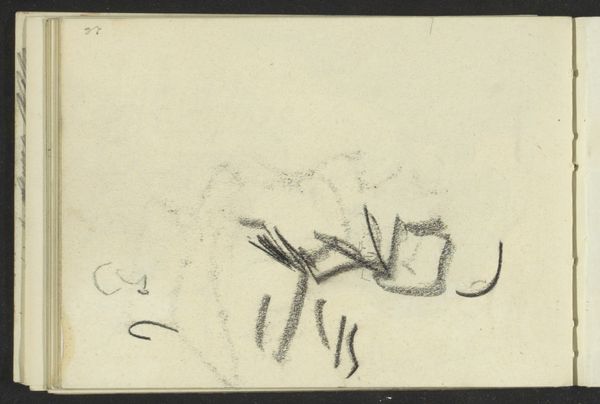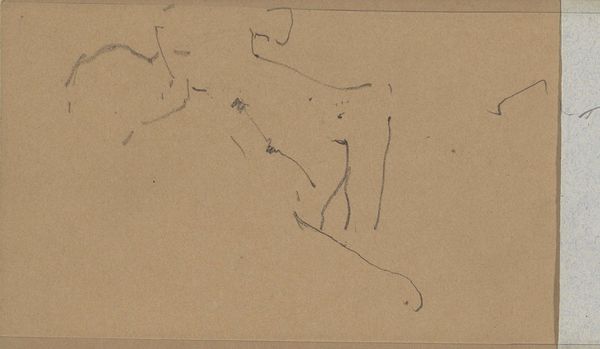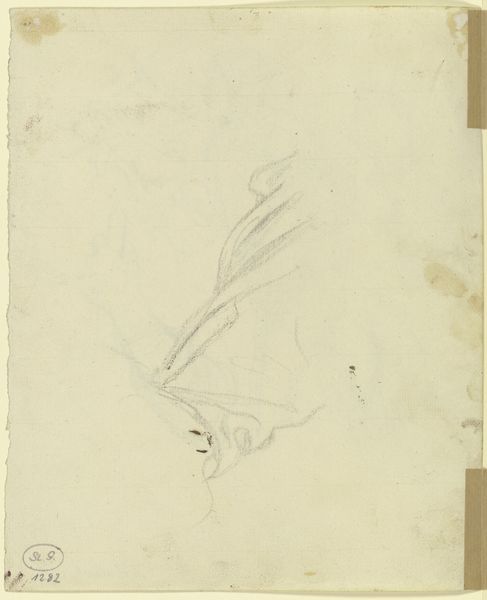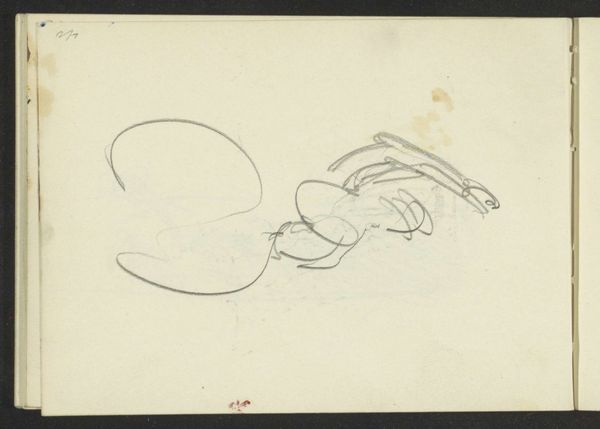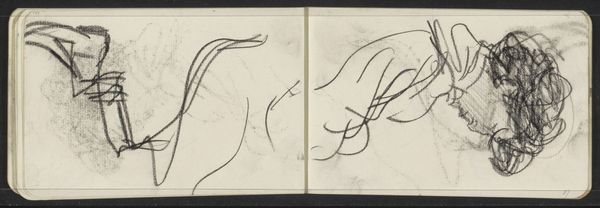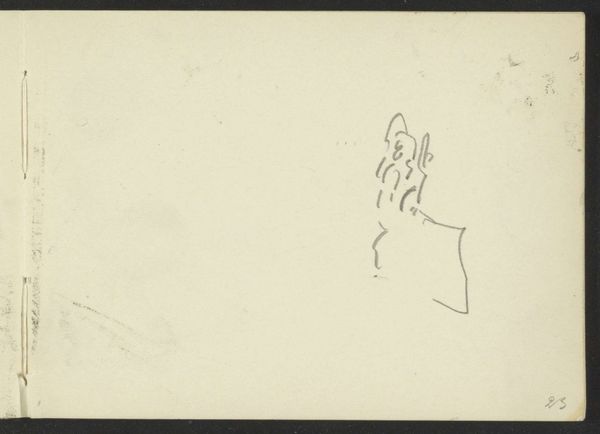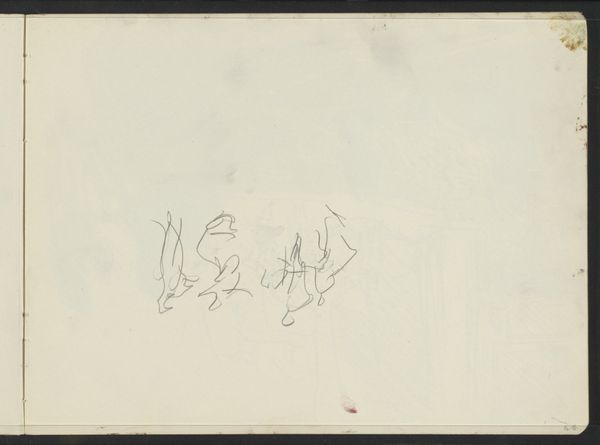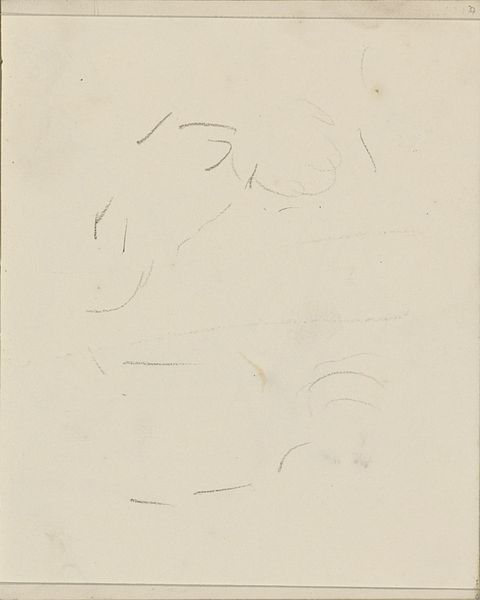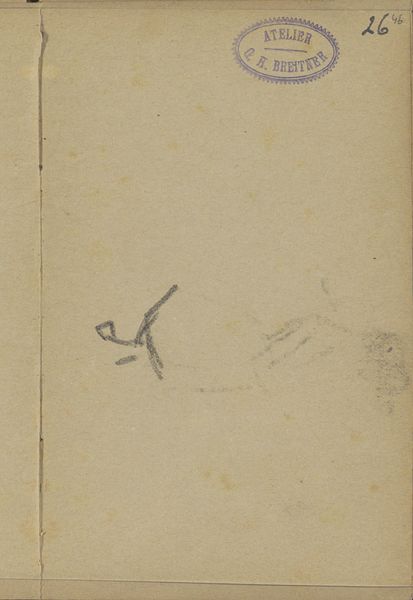
drawing, paper, ink, pencil
#
drawing
#
figuration
#
paper
#
ink
#
pencil
#
line
Copyright: Rijks Museum: Open Domain
Curator: Today we're examining "Studie, mogelijk van een vrouw," which translates to "Study, possibly of a woman," a drawing by Isaac Israels, dating from approximately 1875 to 1934. Editor: Immediately, I see the barest lines, the suggestion of form rather than any defined reality. The restraint feels deliberate. There's a strange quietude to it. Curator: The artist has employed both pencil and ink on paper. The medium complements the fluidity of the piece. Editor: Absolutely. Looking at the use of line, it almost feels like a dance across the paper, capturing the fleeting essence of his subject, or rather, his impression thereof. It begs the question—what was the social position of women in fin de siecle Amsterdam? Were their images often mediated in this fragmented fashion? Curator: Certainly. Israels moved within artistic circles known for their engagement with modern life, including the depiction of women in unconventional settings and poses. This study challenges established notions of portraiture. The unfinished nature opens possibilities, both for interpretation and, of course, the artist's future refinement. It is line drawing as exploration, a record of gesture. Editor: Perhaps it serves to underscore the anonymity of the subject, which says much about women and the era. Or is it an ode to a certain type of modern woman in a metropolis on the rise? We will need to consider its status as a preparatory sketch. Are we imposing a completed artwork concept, by imbuing too much meaning to it? Curator: Valid points. What interests me, from a strictly formalist perspective, is how much Israels achieves with so little. The economy of the line is truly masterful. And these smudges, so subtle and soft: that seems so at odds with industrialised cities. There may also be personal narratives intertwined here too; there’s his artistic journey; what sort of studio would he create? It could speak volumes! Editor: Reflecting, it shows the power of suggestion and what they might reveal regarding representation during the period of burgeoning urban modernity. Curator: And the power of a singular line to evoke the human figure, with such nuance and quiet strength.
Comments
No comments
Be the first to comment and join the conversation on the ultimate creative platform.
